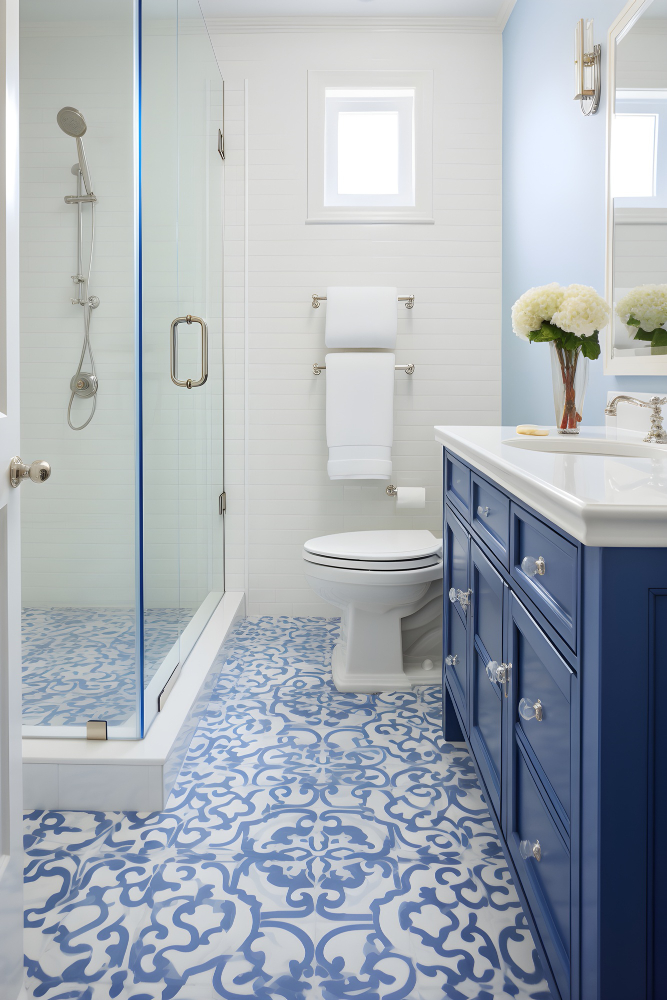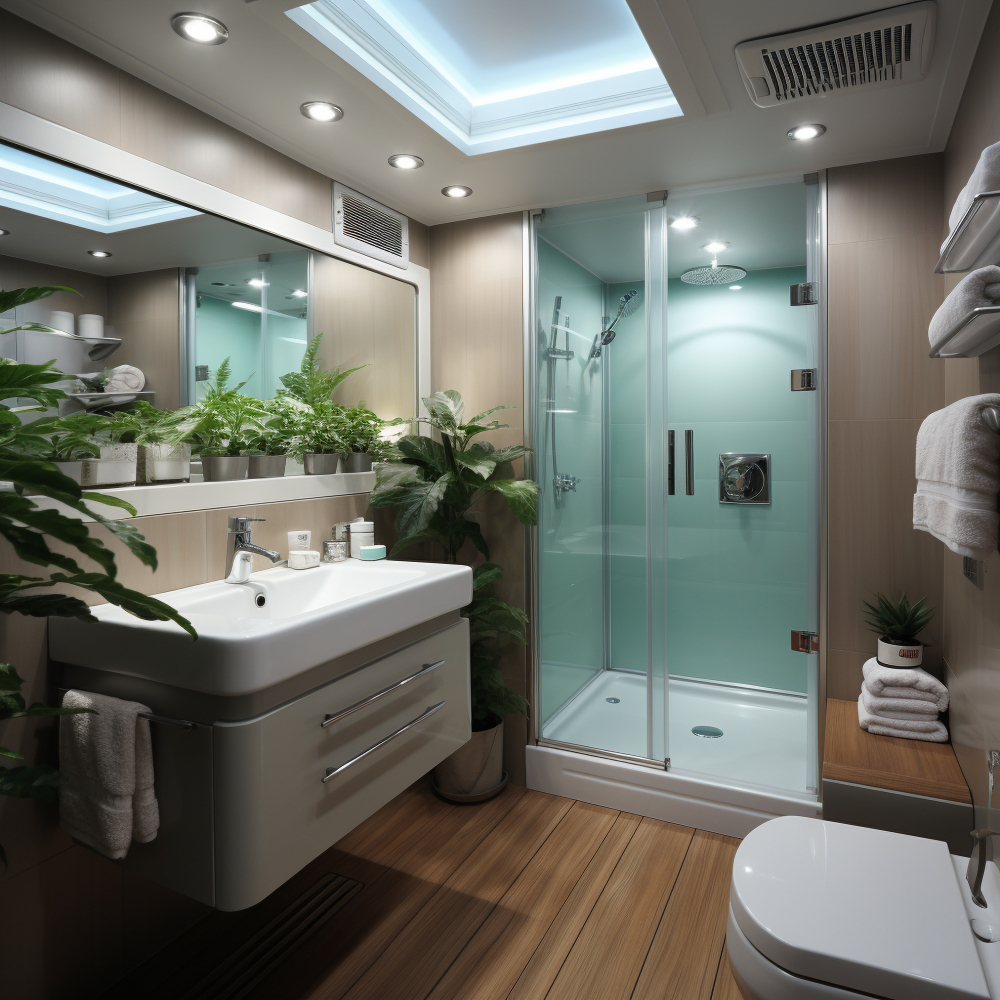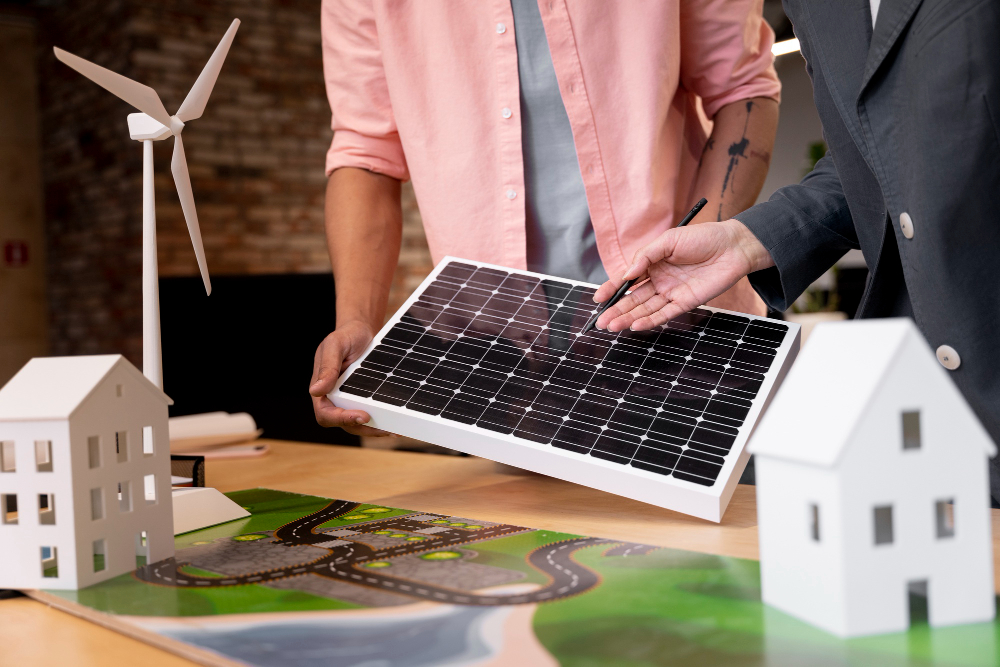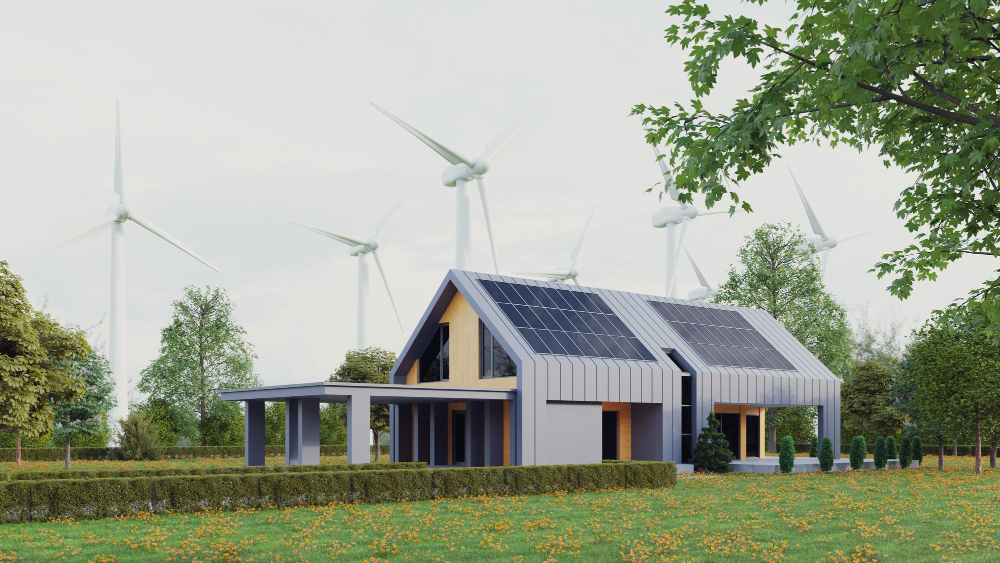Last updated on
In recent years, the focus on sustainability has significantly impacted home renovation projects, with bathrooms no exception. As the world becomes more environmentally conscious, homeowners are seeking ways to remodel their bathrooms in an eco-friendly and aesthetically pleasing manner. This shift towards sustainability is not just a trend but a necessary step towards reducing the ecological footprint.
This article will delve into the top trends in sustainable bathroom remodels that every homeowner should know to build a greener bath for them and their families.
Eco-friendly Materials

One of the latest bathroom trends is the use of sustainable materials. Homeowners are now opting for the following materials:
- Recycled Glass Tiles: Offering both aesthetic appeal and durability, these tiles are made from repurposed glass, which helps reduce landfill waste.
- Reclaimed Wood Cabinetry: Utilizing wood salvaged from old buildings or furniture, this option brings a rustic charm while conserving natural resources.
- Eco-Friendly Countertops: Options like recycled quartz or glass countertops are visually striking and lower the demand for new raw materials.
- Brands of toilet paper: Eco-friendly toilet papers have become a necessity for homeowners as they are made from recycled paper and do not contain any harsh chemicals; plus, they are affordable.
By choosing these materials, homeowners contribute to a cycle of reuse and sustainability, extending the life cycle of existing materials. These choices add unique character to the bathroom and significantly reduce the remodel’s environmental impact.
Water Conservation Techniques

Water conservation is pivotal in eco-friendly bathroom design, with innovative techniques gaining traction. For instance, low-flow toilets, showerheads, and faucets are now widely preferred for reducing water usage while significantly maintaining efficiency. These modern fixtures can reduce water consumption by as much as 50% compared to traditional models.
Furthermore, adopting greywater systems represents a progressive step in sustainable living. These systems repurpose water from showers and sinks for toilet flushing, minimizing freshwater wastage.
This growing trend reflects homeowners’ deeper awareness and commitment to conserve this vital resource, demonstrating that environmentally responsible choices can seamlessly integrate with daily life.
Energy-efficient Lighting and Appliances

Energy efficiency is another key aspect of sustainable bathroom remodels. LED lighting is increasingly favored for its minimal energy usage and extended lifespan, significantly reducing electricity bills and environmental impact. These lights can last up to 25 times longer than traditional bulbs, offering cost and energy savings.
Also, modern bathrooms are adopting energy-efficient appliances like on-demand water heaters, which provide hot water only as needed, drastically cutting energy consumption. For example, Energy Star-rated exhaust fans are another popular choice as they ensure effective ventilation while using less power. Such upgrades can contribute to a greener lifestyle and enhance the overall functionality and comfort of the bathroom.
Natural Light and Ventilation

Natural light and ventilation is a strategic move in sustainable bathroom design. By maximizing these elements, reliance on artificial lighting and air conditioning decreases, leading to significant energy savings.
For instance, homeowners can install skylights and expansive windows to allow sunlight to flood the space and create a bright, welcoming atmosphere while reducing electricity usage. This approach also enhances ventilation, which is crucial in humid bathroom environments. Improved airflow can help prevent mold and mildew, ensuring a healthier space.
Additionally, natural light can boost mood and contribute to a more pleasant and serene bathroom experience, showing that eco-friendly solutions can also enhance personal well-being.
Sustainable Flooring Options
Sustainable flooring options are becoming a key aspect of eco-friendly bathroom remodels. Materials like bamboo, cork, and Linoleum stand out for their environmental credentials. For example, bamboo flooring from rapidly renewable forests offers durability and elegance.
Cork, a naturally renewable material, provides a unique texture and is known for its resilience and comfort underfoot. On the other hand, Linoleum, made from natural materials like linseed oil and jute, is biodegradable and comes in various colors and patterns, allowing for creative design choices.
These options cater to diverse aesthetic tastes and contribute to healthier indoor air quality, as they typically emit lower levels of volatile organic compounds (VOCs) than traditional flooring. Their biodegradable nature ensures a smaller environmental footprint, making them ideal for homeowners looking to make sustainable choices in their bathroom renovations.
Chemical-free Paints and Finishes
The shift towards chemical-free paints and finishes is a significant trend in sustainable bathroom remodeling. Low-VOC paints and finishes, which contain fewer volatile organic compounds, are increasingly used to minimize the release of harmful chemicals into the environment. These products are essential for maintaining healthier indoor air quality, as traditional paints often emit compounds that can harm human health over time.
By choosing low-VOC options, homeowners can create a safer and more eco-friendly living space. These products also offer a wide range of colors and finishes, ensuring that environmental responsibility does not come at the expense of aesthetic appeal.
Smart Technology Integration
Integrating innovative technology into bathroom designs is revolutionizing how homeowners approach energy efficiency and water conservation. Smart showers, faucets, and toilets with advanced features such as leak detection and water usage monitoring play a pivotal role in sustainable living.
These intelligent systems can significantly reduce water waste by promptly alerting homeowners to leaks and providing real-time data on consumption. This can help conserve precious resources and aid in managing utility costs.
Beyond their eco-friendly advantages, smart bathroom technologies offer enhanced convenience and a touch of modern luxury. They allow for personalized settings, such as temperature control and flow rate, enhancing the user experience while contributing to a greener planet. This seamless blend of technology and sustainability marks a step toward creating environmentally conscious and efficient homes.
Portable Toilets
In the context of sustainable bathroom remodeling, the integration of portable toilets as an eco-friendly solution may seem unconventional, yet it holds potential for specific applications, especially in temporary accommodations or during extensive renovations.
Portable toilets have evolved significantly, with many models now emphasizing sustainability through reduced water usage and the incorporation of environmentally friendly waste management systems. These innovations align with the broader goals of reducing water consumption and minimizing the environmental impact of human activities.
The Takeaway
Sustainable bathroom remodels are not just about making eco-friendly choices; they are about creating a space that is both functional and harmonious with the environment. By incorporating these trends into the remodel, homeowners can build a bathroom that is stylish and modern and contributes positively to the planet.
Related reading:
Table of Contents





